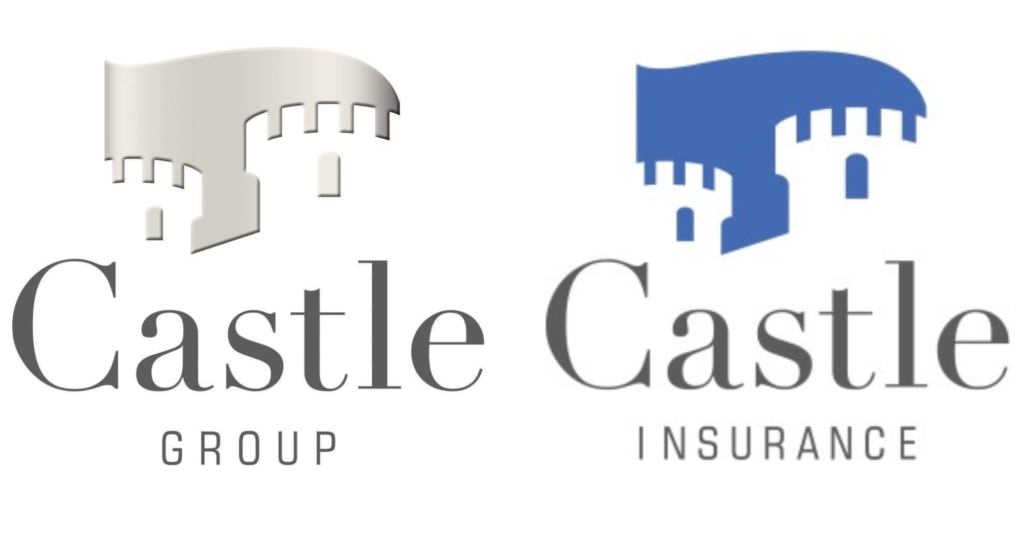
Looking to upgrade or downsize your home
So, it looks like you have made the decision to purchase another home. Maybe the kids have moved out and you need less space or the 2nd kid is on the way and you need another bedroom.
There are options that you have when purchasing that home. If you have lived in the home for a while you likely have some equity built up. These funds can be used toward a down payment for you next home. If you have
I don’t just want to get you a mortgage – I want to educate you and give you the confidence to understand the process and requirements. Also to give you peace of mind to know you have made the right decision for that large investment. Buying property should be more joyful than stressful. I can help make it so.

Getting a whole new mortgage.
Yes – you will have to apply for a new mortgage. In some cases we can port the mortgage – along with the new rate and terms – to the new property but those instances are very limited. In most cases you will have a higher rate than todays rate so it is not often in your best interest.
In some cases there is a blend and extend option. If you need a new larger mortgage, some lenders allow you to add to your current mortgage. But again, these are rarely done as there are very specific conditions attached.

Starting from scratch.
Purchasing a new house will require a new mortgage and will also require you to submit an application to a lender. This is like starting as you would if you never had a mortgage. We will need to see all the same documents as if it is a first mortgage. Documents such as job verification, income verification, and down payment verification if you are upsizing and need more than the equity in the current house.
We will also have to qualify you using todays methods. They have likely changed dramatically from when you purchased your first house. There is a Mortgage Qualifying Rate in certain instances and this is usually higher than the contract rate.

I’m ready to buy a home. How do I get approved?
Having the right mortgage is vital to your financial well-being! Just as you would consult a professional to manage your investments, you should have a professional manage your mortgage financing – and Lang Financial – Castle Mortgage is the right place to start.
Before making an Offer to Purchase, it is very important to know what type of mortgage financing you are qualified or pre-approved for. Our pre-approval process considers your total financial picture in order to assess the borrowing limit for your new home. This will include a credit check. Rest assured that the process is highly confidential and we treat your personal information with absolute discretion.
At the end of the process (which does not take very much time at all), you will get a Letter of Pre-Approval that can be shared with the realtor and the seller of the home you want to buy. The letter gives everyone the confidence to proceed (and could also give you the edge in a bidding war!).
As part of the process, we will be able to provide you with an interest rate that will hold firm for three or four months so you can take your time knowing that your rate is secure.
How much should my down payment be?
It used to be that you needed to put down 25% of the purchase price order to qualify for a mortgage. That has changed over the years and the Canadian government and the three mortgage insurance companies continue to work together to find ways to make home ownership easier and more affordable for all Canadians.
If you can provide just a 5% down payment you can usually qualify for the best interest rates and mortgage options available.
Our clients have sourced their down payments from persona savings, RRSP savings, investment proceeds, gifts from family, and proceeds from the sale of another home.
Mortgage companies and mortgage insurance companies will require proof as to where your down payment originated. For example, savings in the bank must be proven with 90 days’ worth of bank statements to show an accumulation of the savings over time.
Under the Home Buyer’s Program, the Canadian government allows you to withdraw up to $25,000 of your RRSP savings (per person on title) with no tax consequences if you have not owned any property in the last five years. It is a great way to use your RRSP savings for your down payment as you will have approximately 17 years to repay your RRSP withdrawal.
A financial gift from a family member is also a common way to make a down payment. In this case, the family member must complete a gift letter and ensure that the gifted money is deposited to your account at least 15 days prior to your possession date.
How much will my mortgage payments be?
The most important question to answer as you start to plan a budget for buying your first home is ‘How much will my mortgage payments be for my home?’ It is crucial to know what to expect your monthly or bi-weekly mortgage payments to be, as well as property tax payments, condo fees (if applicable), and utility payments.
Our handy Mortgage Payment Calculator will help you figure out your payments. You can enter your desired purchase price, the percentage of your down payment, and your desired amortization period (how long you’d like to take to pay off the mortgage). Property taxes are very specific to your home’s location. A general rule of thumb for estimating your property taxes is to assume that they will be 1% of the purchase price of your home. Divide that number by 12 to estimate your monthly property tax payments.
What will my legal fees be?
In Manitoba, you can estimate that your legal fees will reflect 2% of the purchase price. Keeping this in mind will help you make sure that you have enough money available to bring to your lawyer’s office to close the deal.
The fees break down as follows:
- Your lawyer’s professional fee, typically $500 – $600
- A fee for registering a mortgage on your new home at the Winnipeg Land Titles Office – $81
- A fee to perform a tax search on the new property – $35
- A fee to have your lawyer ensure that the property purchased complies with all municipal zoning regulations and obtain a Zoning Memorandum when necessary – $51
- A series of fees for title searches, ordering caveats from microfilm, fax charges, attending at the Land Titles Office to register documents, photocopying, couriers, and other miscellaneous charges – approximately $110 – $175
- The largest component of your legal and closing fees is the Land Transfer Tax. Registration at the Land Titles Office comprises this fee which rises in proportion to the purchase price of your home. Click here to see the current Land Transfer Tax table (see the O&F brochure)
- You might require a new Survey Certificate for your home – approximately $375
- A possible Interest Adjustment owing to the seller of the home, depending on how long it takes for the title of your home to change into your name from the seller’s name
What kind of documents do I need to show you?
To help us move toward your pre-approval, we’ll need a current paystub to show your current gross and net pay; recent T4s or T4As to show your earnings from last year; an employment letter so that we can learn about your total compensation and the nature of your employment; a Canada Revenue Agency Notice of Assessment; your T1 General Tax Return; and 90 days of bank statements. To see sample of these documents, return to the FAQ section and view the different sample documents we have provided.
What do these mortgage terms mean?
ABSTRACT OF TITLE:
Registry System: A condensed history of the title to a parcel of land. The abstract consists of a synopsis of every recorded instrument affecting the title to that land arranged in chronological order of recording.
ACCELERATED BI-WEEKLY MORTGAGE PAYMENTS:
Mortgage payments which are made every 2 weeks for a total of 26 payments per year. Not to be confused with semi-monthly mortgage payments.
AMORTIZATION PERIOD:
The actual number of years it will take to pay back your mortgage loan. In Canada the amortization does not generally exceed 25-35 years.
APPRAISED VALUE:
An estimate of the value of the property, conducted for the purpose of mortgage lending by a certified appraiser. This appraisal is not to be confused with a building inspection.
ARMS LENGTH:
A transaction between unrelated entities where a willing seller (the seller is not compelled to sell) transacts with a willing buyer (the buyer is not compelled to buy).
ASSUMABILITY:
Allows the buyer to take over the seller’s mortgage on the property.
CLOSED MORTGAGE:
A mortgage that locks you into a specific payment schedule. A penalty usually applies if you repay the loan in full before the end of a closed term.
COMPOUND PERIOD:
The number of times per year in which the interest rate is compounded. In Canada, mortgages are generally compounded semi-annually, which is twice per year.
CONDOMINIUM FEE:
A common payment among owners which is allocated to pay expenses associated with the development.
CONVENTIONAL MORTGAGE:
A mortgage loan issued for up to 80% of the property’s appraised value or purchase price, whichever is less.
DOWN PAYMENT:
The buyer’s cash payment toward the property. This is the difference between the purchase price and the amount of the mortgage loan.
EQUITY:
The difference between the price for which a property could be sold less the total debt registered against the property.
EFFECTIVE INTEREST RATE:
This is the actual interest rate paid on a loan or mortgage. In Canada, mortgages typically have a higher effective interest rate because of the fact that interest rates are compounded semi-annually or twice per year.
FIRST MORTGAGE:
The first mortgage in the mortgage agreement that is considered to be in first place and will have first claim on assets in the event of default.
FIXED RATE MORTGAGE:
A mortgage in which the rate of interest has been fixed for a specific period of time. This specific period of time is generally known as the term.
GDS RATIO (Gross Debt Service Ratio):
The percentage of gross annual income required to cover payments associated with housing. Payments include mortgage principal, interest, property taxes and sometimes include secondary financing, heating, condominium fees or pad rent.
HIGH-RATIO MORTGAGE:
A mortgage that exceeds 80% of the home’s appraised value or purchase price, whichever is lower. These mortgages must be insured by CMHC, Genworth Financial, or AIG Unity for payment.
INTEREST RATE:
The value charged by the lender for the use of the lender’s money expressed as a percentage.
LAND TRANSFER TAX, DEED TAX OR PROPERTY PURCHASE TAX:
A fee paid to the municipal and/or provincial government for transferring the property from seller to buyer.
LOAN TO VALUE RATIO:
The ratio of the loan to the appraised value or purchase price of the property, whichever is lower.
MATURITY DATE:
The end of the term, at which time you can pay off the mortgage or renew it.
MORTGAGEE:
The party who advances the funds for a mortgage loan i.e.- the lender.
MORTGAGE INSURANCE:
Applies to high ratio mortgages. It protects the lender against loss if the borrower is unable to repay the mortgage.
MORTGAGE LIFE INSURANCE:
Pays off the mortgage if the borrower dies.
MORTGAGOR:
One who gives a mortgage as security for a loan i.e.- the borrower.
NOMINAL INTEREST RATE:
An interest rate which does not necessarily correspond to the effective interest rate. In Canada, these two rates do not correspond.
OPEN MORTGAGE:
Allows partial or full payment of the principal at any time, without penalty.
OSB (Outstanding balance):
The amount of principal which is still outstanding at the end of the term.
PORTABILITY:
A mortgage option that enables borrowers to take their current mortgage with them to another property, without penalty.
PRE-APPROVED MORTGAGE:
Qualifies you for a mortgage before you start shopping. You know exactly how much you can spend in order to make a ‘firm’ offer when you find the right home.
PREPAYMENT PRIVILEGES:
Voluntary payments in addition to regular mortgage payments.
PRINCIPAL:
The amount borrowed or still owing on a mortgage loan. Interest is paid on the principal amount.
REFINANCING:
Paying off the existing mortgage and arranging a new one, or renegotiating the terms and conditions of an existing mortgage.
RENEWAL:
Renegotiation of a mortgage loan at the end of a term for a new term.
SEMI MONTHLY MORTGAGE PAYMENTS:
Mortgage payments which are made on the 1st and 15th of the month, or twice per month (24 payments per year). Not to be confused with bi-weekly mortgage payments (26 payments per year).
SECOND MORTGAGE:
Additional financing. Usually has a shorter term and higher interest rate than the first mortgage.
TDS RATIO (Total debt service ratio):
The percentage of gross annual income required to cover payments associated with housing and all other debts and obligations, such as car loans and credit cards.
TERM:
The length of time the interest rate is fixed. It also indicates when the principal balance becomes due and payable to the lender.
TITLE:
Legal ownership in a property.
VARIABLE RATE MORTGAGE:
A mortgage with fixed payments, but which fluctuates with interest rates. The changing interest rate determines how much of the payment goes towards the principal.
VENDOR TAKE BACK MORTGAGE:
When the seller provides some or all of the mortgage financing in order to sell their property.
What is an Employment Letter?
A current employment letter refers usually to a typed letter on company letterhead, signed by a human resources manager, staff manager or payroll clerk that clearly states your official start date, expiry date of any probationary period, your wage (either your annual salary or your hourly wage) as well as any annual bonus or commission structure, minimum amount of hours worked (if applicable) and your official job title. This letter must be dated within 30 days of your mortgage application. This employment letter must provide the contact information for the company or the person providing the letter so that the mortgage company can contact them to confirm the information on the letter.
The letter, together with verbal confirmation from your employer will satisfy the lender of your current employment status as stated on your application.
What is a Paystub?
A current paystub is a computer generated form that indicates your salary or normal hours worked, your hourly wage, your source deductions (income tax, CPP and EI) as well as any other regular deductions for union dues, RRSP or CSB deductions, shift premiums, vacation pay etc. This paystub must be dated within 30 days of your mortgage application and will serve to further confirm to the mortgage company of the income stated on your mortgage application.
What is a T4/T4A?
A T4 form is the summary of your previous year’s earned income as reported by the employer. It is a computer generated form by the human resources department or payroll department at your employer and is normally provided to you by the end of February each year. It is normally a pink and white form that is half the size of a normal piece of paper. It will have your name and address information, the name of your employer, your SIN number and your gross income recorded by your employer. This form will provide proof to the lender of where you worked the previous year and can be used in some cases, in lieu of an employment letter. In most part time employment situations, a minimum of 2 years of T4 forms must be supplied to confirm an average earned income.
A T4A form looks exactly like the normal T4 form but it is generated when your income is paid out as commission. Payroll departments must reflect normal salary or hourly income differently than commission or bonus earnings and therefore provide the employee with a T4A form rather than a T4 form. In most cases of commissioned or bonus income, a minimum of 2 years T4A forms must be supplied to confirm an average earned income as stated on your mortgage application.
What is a Notice of Assessment?
A Notice of Assessment form is usually a 2 or 3 page form that Revenue Canada sends back to you as a summary of your received Tax Return. It will either contain a refund cheque or a bill for your outstanding taxes for the previous tax year. It is usually a full size sheet(s) of paper and is normally light blue in color. It will have your full name on it along with your SIN number and the tax year clearly indicated in the top right corner. It is normally requested by a mortgage company for 2 reasons: to confirm your taxable income (showing as your Line 150 income) and to confirm if there are any outstanding taxes owed to Revenue Canada.
Normally an NOA or Notice of Assessment would be requested to any self-employed mortgage applicants to prove that no taxes are owing to Revenue Canada as tax arrears could be placed on title of your home and take precedence over any mortgage financing in a sale of the property. The lender will want to be aware of any potential liability before making mortgage financing available.
What is a T1 General Tax Return?
A T1 General Tax Return is the multi-page document that you complete either on your own, with a tax company like H&R Block or your accountant for submission of your personal taxes to Revenue Canada. It will contain several pages for your provincial and federal tax calculations as well as several ‘schedules’ that will contain information about tax write-offs and tax credits. If you are self-employed, your mortgage company may request 2 or 3 years T1 General Tax Returns to verify that you are indeed filing taxes as a self-employed individual and in some cases, they may want to add back several things into your income in order to better qualify you for financing.
What are 90 Days of Bank Statements?
These statements would be the transactions (deposits, withdrawals, etc) that have occurred in your bank account. These statements are normally copies of the originals that your bank or credit union has mailed to you or copies printed from your internet bank account. They are normally used to verify to the mortgage company that you have accumulated the amount of money necessary to make up the down payment and closing/legal fees to complete a real estate purchase. Any large deposits that exceed $2000 showing on your statements (other than normal payroll deposits) will have to be verified by way of copies of cheques deposited or other receipts to satisfy the mortgage company of your ability to save the money necessary for the down payment and closing costs as this is a condition of financing. Occasionally these statements will be used to verify your receipt of child support, spousal support or pension payments if other traditional forms of documentation is unavailable.
NOTE: These statements must show your name(s) and account number to verify account ownership.
What is an “Offer to Purchase”?
An Offer to Purchase form is the formal document that makes an offer to buy a house. It states the offered price, the down payment, any conditions, and other elements. Your real estate agent of lawyer can help you complete the offer.
At Lang Financial, we service customers across Canada. Primarily, we offer Financial Advice in Southern Manitoba and Northwestern Ontario areas.
I work with Castle Insurance Group Inc.

